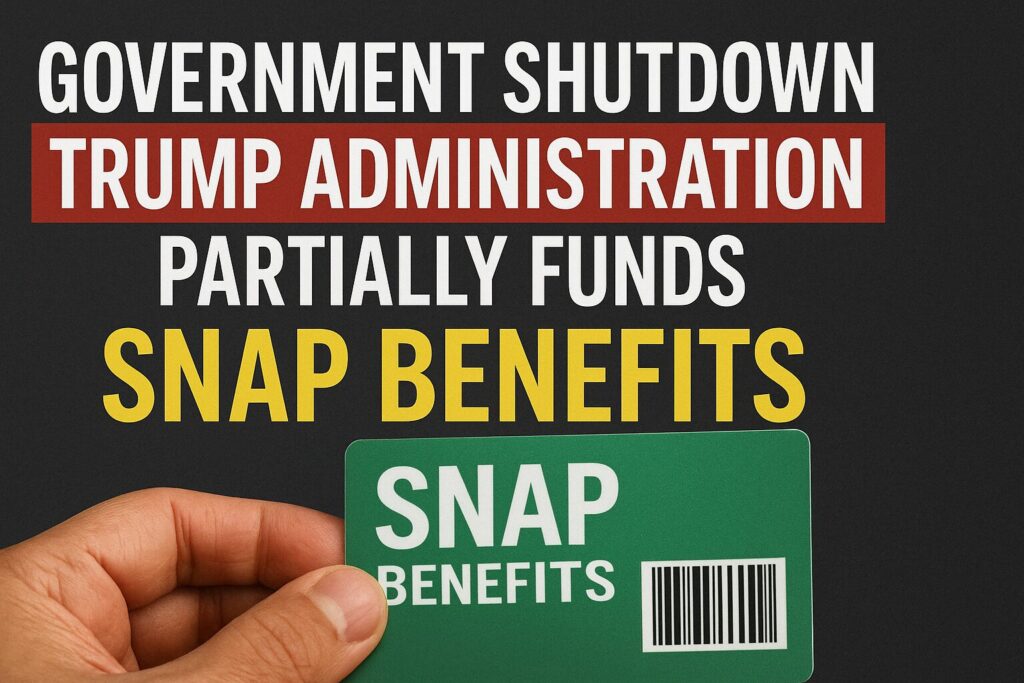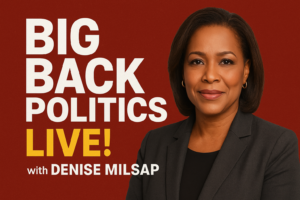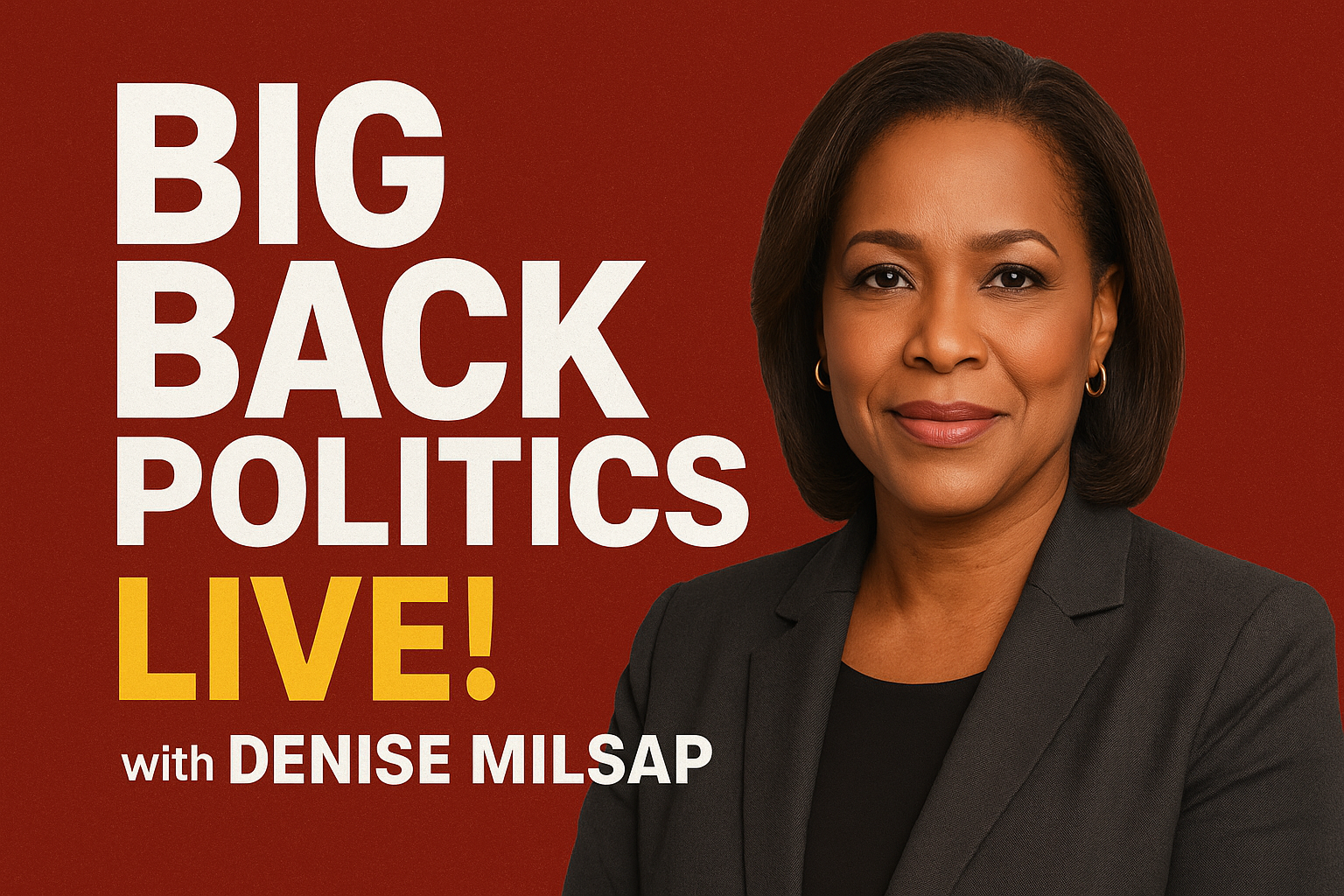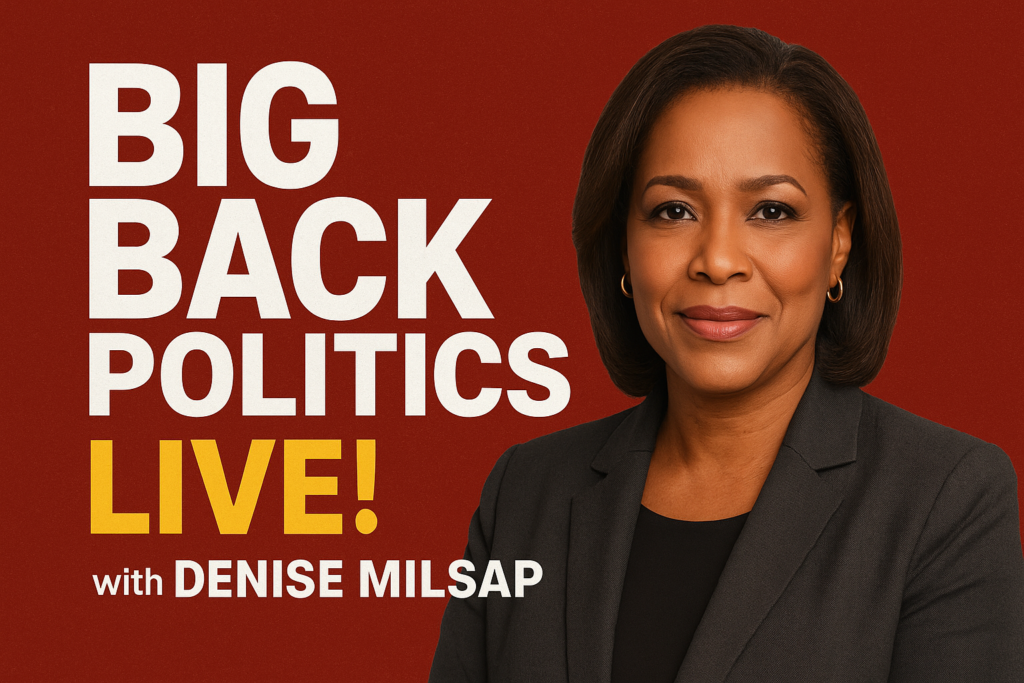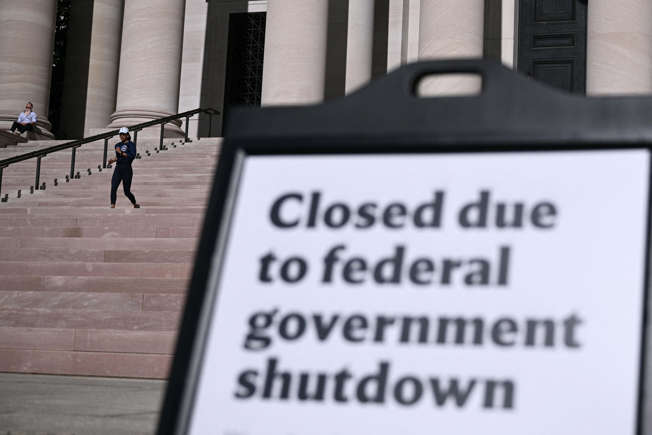
Major Takeaways:
The Trump administration has approved partial SNAP benefit payments during the ongoing government shutdown, offering short-term relief to millions of low-income families.
USDA will use emergency funds to sustain benefits temporarily, but uncertainty looms if Congress fails to reach a broader spending deal.
Economists and advocates warn that delays could devastate families and local economies, exposing deep flaws in America’s social safety net.
Government Shutdown Update: Trump Administration Partially Funds SNAP Benefits Amid Crisis
As the government shutdown stretches deeper into November, millions of Americans depending on the Supplemental Nutrition Assistance Program, better known as SNAP, are facing renewed anxiety over whether they’ll continue to receive benefits. In a surprise announcement, the Trump administration said it will partially fund SNAP benefits for the coming weeks to ease concerns among families struggling to put food on the table. But even this temporary solution has stirred debate about priorities, politics, and the real cost of Washington’s dysfunction.
The ongoing shutdown stems from a bitter standoff between the White House and Congress over spending priorities, border security, and federal debt. With funding for several agencies stalled, critical programs like SNAP risk running dry if a longer-term resolution isn’t reached soon. For the 41 million Americans who rely on the program, even a brief disruption could mean missed meals, empty grocery carts, and financial strain that ripples far beyond the kitchen table.
A Partial Fix for a Growing Crisis
According to administration officials, the U.S. Department of Agriculture (USDA) has been authorized to tap into limited emergency funds to cover a portion of SNAP payments through the end of the month. The move comes as mounting pressure from advocacy groups, food banks, and state agencies urged Washington to act before benefits lapsed entirely.
Still, “partial” is the operative word. The administration’s plan doesn’t guarantee full payments for the coming months. Instead, it provides a stopgap that could keep the program afloat temporarily while lawmakers negotiate broader funding legislation.
The USDA said it would prioritize families with the greatest need, including low-income households with children, the elderly, and individuals with disabilities. However, the agency has not clarified whether all states will receive funds at the same rate or whether some may see reduced allocations based on administrative constraints.
For those living paycheck to paycheck, this uncertainty adds another layer of stress. Food assistance programs already operate on tight margins, and any gap even for a few days can leave families scrambling.
Real People, Real Struggles
At a community food pantry in Detroit, volunteers say they’ve seen a 20 percent increase in visits over the past two weeks. Parents are stocking up on staples like rice, canned beans, and baby formula, bracing for the possibility that SNAP cards may not reload on time.
“It’s hard to explain to a child why there’s no milk,” said one mother waiting in line. “We depend on those benefits to make it through every month. If they stop, I don’t know what we’ll do.”
Similar stories are playing out nationwide, from rural Mississippi to inner-city Chicago. Even as federal officials insist that no one will go hungry, the gap between political promises and pantry shelves remains wide.
Advocates argue that partial payments are only delaying the inevitable without a full budget resolution, the problem will resurface within weeks. Some state administrators are already warning residents to budget carefully, as future funding could be uncertain.
The Politics Behind the Shutdown
The current shutdown began when the Trump administration and congressional leaders failed to agree on key spending measures, including controversial allocations for infrastructure, energy, and border security. Each side blames the other for the deadlock.
The White House insists that its plan to fund essential programs, including SNAP, demonstrates a commitment to helping vulnerable Americans even amid fiscal gridlock. Critics counter that the administration’s approach is both short-sighted and politically motivated, using selective funding as leverage to pressure Congress.
Regardless of where the blame lies, the result is the same ordinary citizens caught in the crossfire of political gamesmanship. Economists estimate that a prolonged shutdown could cost billions in lost productivity, unpaid wages, and slowed economic activity. For families on SNAP, the impact is immediate and deeply personal.
What’s at Stake
SNAP is one of the federal government’s largest and most essential safety nets. Each month, it provides crucial food assistance to low-income individuals and families. The average benefit is modest about $6 per person per day but it often makes the difference between having dinner or going hungry.
During previous shutdowns, SNAP managed to stay funded through contingency plans and carryover balances. This time, the financial cushion is thinner. Officials say the USDA has limited flexibility under current appropriations law, meaning future payments depend heavily on congressional action.
If a resolution isn’t reached soon, funding could dry up, leaving states unable to process benefits for December. That scenario could trigger a wave of food insecurity unseen since the height of the pandemic, when emergency food lines stretched for miles in some communities.
Economic Ripple Effects
The consequences of a lapse in SNAP funding would ripple across the economy. Retailers, especially grocery chains and small corner stores in low-income neighborhoods, rely heavily on SNAP spending. The USDA estimates that for every $1 spent on SNAP, the economy sees about $1.50 in activity.
A sudden halt in those funds would hit local economies hard, particularly in rural areas and urban centers where federal benefits make up a large portion of household spending. In short, less SNAP funding doesn’t just hurt families it hurts businesses too.
Moreover, food banks and charitable organizations are already stretched thin. Many are reporting shortages in donations and volunteers, even as demand rises. “If SNAP stops, there’s no way we can fill that gap,” said a food bank director in Atlanta. “We’d be overwhelmed in days.”
The Administration’s Balancing Act
The Trump administration maintains that its decision to partially fund SNAP is an act of prudence, not politics. Officials point to statutory limits on how funds can be used during a shutdown and say they’re doing everything possible within those bounds to protect the most vulnerable.
Critics, however, argue that the administration has the power to do more but is prioritizing optics over outcomes. They accuse the White House of using food aid as a bargaining chip to score political points rather than working toward a comprehensive fix.
Policy experts note that even with partial funding, administrative challenges remain. States must process payments, verify eligibility, and handle appeals all of which require functioning government offices. With thousands of federal workers furloughed, delays are inevitable.
A Question of Priorities
This latest crisis has reignited a long-standing debate about government responsibility and the social safety net. Should programs like SNAP be insulated from political standoffs? Many advocates believe so, calling for automatic funding mechanisms that keep essential services running even when Washington gridlocks.
Others argue that the current system, while imperfect, forces accountability by tying spending to congressional oversight. They fear that automatic funding could remove incentives for lawmakers to reach timely agreements.
Still, for millions of families, that’s an academic debate. What matters now is whether the government can ensure that grocery money arrives when it’s supposed to.
The Human Toll
Behind the policy disputes and budget spreadsheets are real people facing real consequences. In New Orleans, a retired grandmother caring for her two grandchildren said her $280 monthly SNAP benefit keeps her family afloat. Without it, she’d have to choose between food and electricity.
“These politicians talk about budgets, but they don’t understand what it’s like to stretch $10 for dinner,” she said. “Every month, it’s a struggle.”
Community leaders across the country are echoing those sentiments, urging local officials to prepare for a possible gap in assistance. Churches, shelters, and nonprofits are coordinating to provide emergency meals if the federal government can’t deliver.
Looking Ahead
There’s no clear end in sight to the shutdown. Negotiations continue behind closed doors, with both sides expressing optimism but offering few concrete solutions. Some lawmakers are pushing for a short-term spending bill to keep programs like SNAP funded through the holidays, while others demand a comprehensive deal that addresses broader budget issues.
Until then, the USDA’s partial payments may keep families fed but only temporarily. If the political stalemate drags on, the system could collapse under its own weight.
Economists warn that even if full funding is restored soon, the damage to public confidence could linger. When citizens begin to doubt that essential programs will be there when they need them, trust in government erodes and rebuilding that trust is far harder than balancing a budget.
Conclusion
The Trump administration’s decision to partially pay for SNAP benefits during the shutdown offers momentary relief but not a real solution. Millions of Americans remain on edge, unsure whether their next grocery trip will be covered.
While the move buys time, it doesn’t solve the deeper problem political paralysis that turns public welfare into a pawn in partisan chess. For the families who depend on these benefits, the message is clear: Washington’s gridlock has real consequences, and every delay carries a human cost.
The government may be partially open for business, but for many Americans, it’s barely functioning. Until leaders prioritize people over politics, the cycle of crisis will keep repeating one shutdown, one budget battle, and one family at a time.

